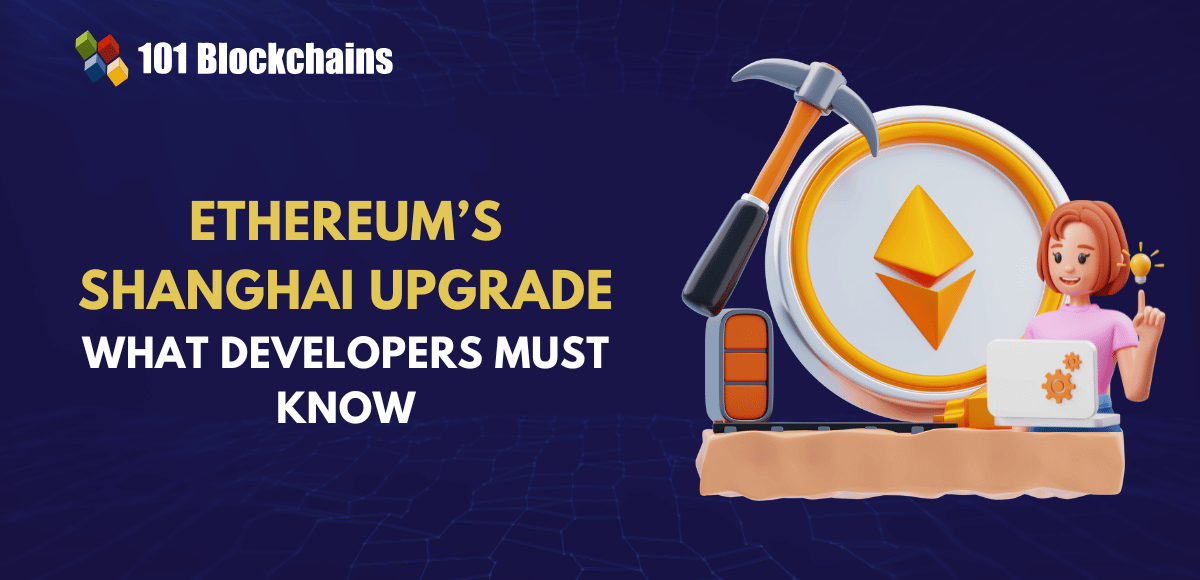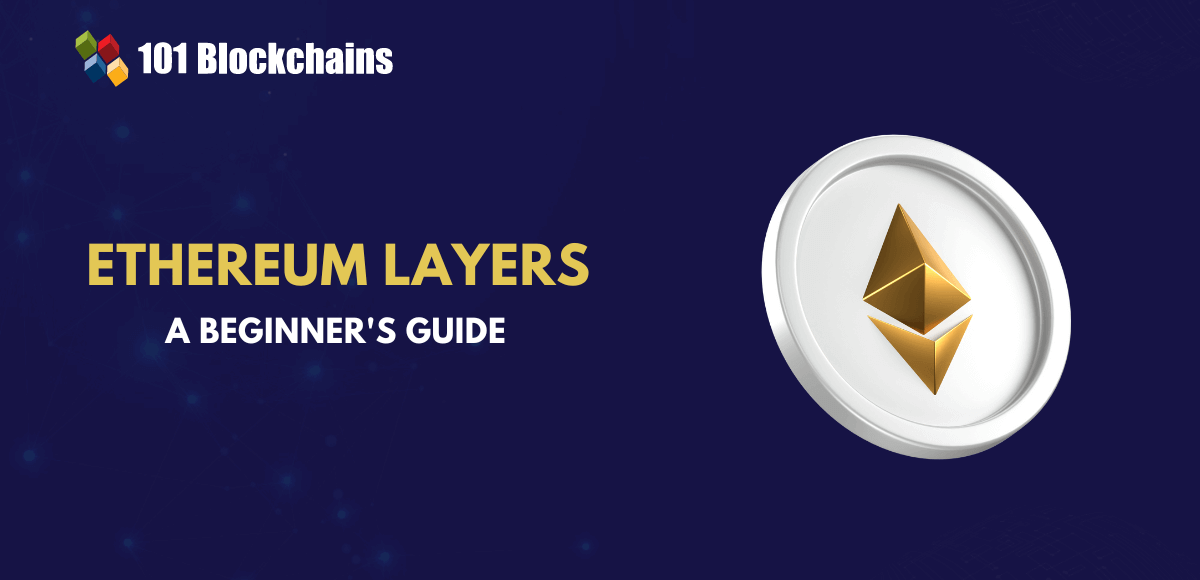Learn how blockchain truly works, master key definitions, and uncover what makes smart contracts so "smart." Dive into the fundamentals, gain valuable insights, and start your blockchain journey today!

- Ethereum
Georgia Weston
- on November 11, 2022
What is Sharding in Ethereum?
Blockchain developer communities have constantly been working on new strategies for achieving blockchain scalability. One of the prominent requirements in public blockchain networks focuses on the need for several nodes to validate transactions. As a result, public blockchain networks could not find adequate opportunities for scalability.
Ethereum could process around 10 to 13 transactions per second, while centralized systems such as VISA could enjoy capacities of up to 24,000 transactions per second. How can blockchain sharding resolve these issues? Blockchain networks and the decentralized applications running on them could find mass adoption only when they achieve scalability.
Other than layer 2 blockchains, sharding has been proposed as a vital solution for achieving more users on Ethereum. How will sharding help Ethereum in supporting more users? The following post offers an introductory guide on sharding and its significance for the future of Ethereum as well as other blockchains.
Excited to build your skill in Ethereum development by leveraging the ethers.js library? Enroll Now in Ethers.Js Blockchain Developer Course
What is Sharding?
The foremost highlight in any outline of Ethereum sharding explained clearly would focus on its definition. Sharding is presently a concept under development by the Ethereum developer community and is closely related to the blockchain network. It may come live in 2023 and has become one of the key topics of attention for everyone in the crypto community.
The origins of sharding emerge from another similar technique in centralized database management. Database sharding involves the division of a larger database into smaller chunks of shards to improve the efficiency of processing tasks. At the same time, database sharding also distributes a database throughout multiple machines working in parallel, thereby fuelling application scalability.
You can understand the definition of sharding in Ethereum by identifying the primary goals behind sharding. In the case of centralized database management, sharding is necessary as the number of users for a specific application continues to increase. More users for an application lead to an increase in data stored in the database of software. Subsequently, the overloaded database could affect the app performance alongside user experience. Therefore, sharding can resolve the problems by reducing the load of databases and improving load times.
Excited to learn the basic and advanced concepts of ethereum technology? Enroll Now in Ethereum Technology Course
Definition of Sharding in Ethereum
The basic definition of sharding for centralized database management showcases how it involves splitting a database horizontally to distribute the load. In the case of Ethereum, the concept of sharding would work coherently with layer 2 rollups for dividing the load of processing large volumes of data required for rollups across the complete network. As a result, it can help in reducing network congestion alongside increasing transactions per second.
Traits of Sharding
The overview of Ethereum blockchain sharding serves as the ideal foundation for learning more about the concept. It is important to note that sharding could function as something more than just a scalability solution. Here is an outline of the distinct features that make sharding a unique approach to scalability.
-
Flexibility for Running a Node
Running your own node comes with many significant advantages. In such cases, the flexibility for running a node could definitely come in handy. Sharding offers an effective opportunity for scaling up without increasing the size of an existing database. At the same time, sharding also helps in maintaining decentralization.
In such cases, Ethereum would become less accessible for network validators owing to the need for expensive and powerful computers. Validators don’t need to store all the data on their systems by applying to shard. Data techniques could help in confirming the availability of data to the network as a single entity. Therefore, users could easily reduce the cost associated with data storage on layer 1 through the reduction of hardware requirements.
-
Additional Network Participation
The concept of blockchain sharding could encourage more users to participate in different networks. It can help in running Ethereum from a personal smartphone or laptop, thereby allowing more people to participate. As a result, shared Ethereum could have more clients running operations seamlessly on the platform. Subsequently, sharding also contributes unique advantages for increasing security through decentralization.
More decentralization of the network ensures lower vulnerabilities for attacks. The reduced hardware requirements enable an easier process for running clients on your own without depending on any intermediary services. In addition, users can consider the operations of multiple clients, which could offer a vital boost for security and network health by reducing the points of failure.
Want to learn the basic and advanced concepts of Ethereum? Enroll now in Ethereum Development Fundamentals Course
Ethereum Sharding Roadmap
One of the key questions regarding sharding in Ethereum points to its availability. As of now, one should believe that sharding will become life in 2023, according to the claims of Ethereum itself. On the other hand, plans for sharding have been evolving continuously to adapt to scaling approaches with more efficiency.
For example, dank sharding serves as an alternative approach to sharding by avoiding the shard chains and choosing shard blobs for splitting the data. In addition, it could also facilitate data availability sampling to confirm the availability of all data. In addition, the concept of sharding would also accompany many other unplanned developments in the future. For now, the only suggested impression about the availability of sharding presents two distinct stages.
Start learning about second-most-popular blockchain network, Ethereum with World’s first Ethereum Skill Path with quality resources tailored by industry experts Now!
-
Data Availability
The focus of the first phase of rolling out sharding would revolve around data availability. A review of answers to “What is sharding in Ethereum?” suggests the need to reflect on the roadmap for sharding. In the first stage of rolling out shard chains, they would work for adding data to the network. The first shard chains would not handle smart contracts or related transactions. On the contrary, they would offer substantial improvements in transactions per second with the support of rollups.
Rollups are one of the popular examples of layer 2 technologies. Interestingly, rollups can offer formidable support for Ethereum blockchain sharding with bundles of transactions. Rollups can help in bundling or rolling up transactions in a single off-chain transaction, followed by the development of cryptographic proof. The cryptographic proof of off-chain transactions is submitted to the main chain and reduces the data required for different transactions. The power of data availability with shards combined with rollups could help in achieving around 100,000 transactions per second.
-
Code Execution
The second phase in the Ethereum sharding roadmap would focus on code execution. Ethereum had planned to introduce new additional functionalities in shards, which would make them more similar to the Ethereum mainnet. As a result, shards could become more powerful enough for storing and executing code alongside managing transactions.
Each shard would feature a unique collection of account balances and smart contracts and can handle transactions like the Ethereum blockchain itself. Furthermore, the next stage in the development of sharding would also emphasize cross-shard communication for easier transactions among shards.
Get familiar with the terms related to ethereum with Ethereum Flashcards
The Necessity of Code Execution
The detailed outline of Ethereum sharding explained with specific emphasis on its roadmap, draws attention to some important questions. It is important to wonder about the need for code execution in the second phase of rolling out shards. Is code execution really necessary for shards when version 1 shards could achieve around 100,000 transactions per second? According to the founder of Ethereum, the community is presently working on three distinct options with respect to code execution.
The first scenario points to complete independence from state execution, which would make the shards work as data repositories. Developers are also thinking about adding a few execution shards, which could speed up the delivery process. Most important of all, the Ethereum developer community also looks up to the possibilities for introducing ZK or Zero Knowledge snarks.
The community can think of adding code execution in shards when they have better ZK snarks. It could serve as a valuable improvement for introducing private transactions within the network. Although ZK snarks would require smarter shards, it is still too early to assume anything about their applications.
Curious to know how to build your expertise in Ethereum technology? Check the detailed guide Now on How To Advance Your Ethereum Skills?
Interplay with Upgrades
Ethereum upgrades have evolved as interrelated entities. It is important to understand how the shard chains would work with respect to other upgrades. Shards would have an interwoven relationship with the Ethereum blockchain. Therefore, the tasks for maintaining the security of shards and synchronizing them effectively have been integrated effectively into Ethereum clients responsible for building a blockchain.
Stakers would have to assign their duties for sharding to ensure continuous operations. The applications of sharding in Ethereum would imply the necessity of access to snapshots for other shards. As a result, they could develop a seamless view of the state of Ethereum for maintaining everything in an updated state.
Build your identity as a certified blockchain expert with 101 Blockchains’ Blockchain Certifications designed to provide enhanced career prospects.
Why is Sharding Essential?
The guide to blockchain sharding with the Ethereum blockchain would also emphasize the reasons for validating the need for sharding. As you all know, Ethereum is constantly growing, with many DeFi solutions and dApps finding their roots in Ethereum. As time passes, the growing amount of data on the Ethereum blockchain would make it difficult and expensive to run an Ethereum node. In this case, each transaction must be processed across all nodes, thereby restricting scalability. Sharding could offer a reliable answer to the problems by serving a distinct approach to scalability.
First of all, you must notice that sharding is comprehensively different than state channels as well as plasma. It does not work for moving transactions outside the blockchain network. The primary focus of sharding rests on breaking up the blockchain into different parts. As a result, all nodes wouldn’t have to take part in processing all transactions on the Ethereum network.
Should every node process a transaction to consider that the blockchain is secure? The answer to ‘What is sharding in Ethereum?” would also reflect profoundly on how it resolves the scalability trilemma. As of now, there is no single blockchain network that can have the three properties of decentralization, security, and scalability. The blockchain trilemma implies that blockchain networks would have to compromise on one of these factors to achieve the other two.
How Do Shards Work in Real?
The role of shards in resolving the blockchain trilemma is a perfect explanation for their significance in the future of Ethereum. However, it is also important to learn about their work in practice. A shard chain would feature notaries selected on a periodic basis for voting on block validity, like miners. The votes of notaries are subject to review by a committee on Ethereum mainnet, followed by merging through a sharding manager contract. The shard blocks are referred to as collations and would be chained together just like blocks in a blockchain.
A detailed reflection on the Ethereum sharding roadmap might indicate possibilities for many new developments. On the ground level, every shard features a link to the Ethereum mainnet through Merkle trees, thereby establishing a cryptographic association. Each shard could then serve as a standalone blockchain. Imagine shards as thousands of islands with different traits and functions connected to each other through communication protocols.
Challenges for Sharding
The foremost problem with sharding in Ethereum is that it has not been implemented in practice. Sharding definitely sounds like a great technique on paper and has many promising implications. However, some critical challenges, such as attack vectors, could halt the adoption of sharding technology.
For example, a single-shard takeover attack could be one of the formidable challenges to sharding. The attacker would assume control over a major share of block producers in a shard for creating a malicious shard that would submit invalid transactions. At this point in time, developers have pointed out random sampling as a viable solution, which is currently under active development. In addition, sharding is easier to implement in Proof of Stake chains rather than in Proof of Work chains.
Start learning Blockchain with World’s first Blockchain Skill Paths with quality resources tailored by industry experts Now!
Bottom Line
The concept of sharding is an ingenious solution for scalability on Ethereum. Why should you think of sharding with respect to Ethereum only? Well, the core developer community of Ethereum took the initiative to develop the concept of sharding. At the same time, Ethereum blockchain sharding serves many conclusive advantages beyond scalability.
For example, imagine shard chains working as independent Ethereum-like chains with smart contract and transaction processing functionalities. Such advancements could not only improve the Ethereum blockchain in terms of decentralization and scalability but also ensure security. Learn more about scalability solutions and how sharding could fit in the larger picture of the Ethereum roadmap now.
*Disclaimer: The article should not be taken as, and is not intended to provide any investment advice. Claims made in this article do not constitute investment advice and should not be taken as such. 101 Blockchains shall not be responsible for any loss sustained by any person who relies on this article. Do your own research!






